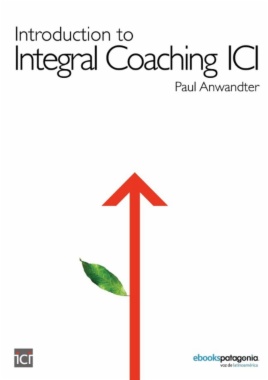"For the first time, today's most powerful mental models and disciplines, such as Ken Wilber's Integral Philosophy, Ericksonian Hypnosis, Systemic Thinking, NLP, Emotional Intelligence and Coaching, have been combined and reviewed in this practical and effective methodology. The reader will be able to master the art of getting to know and help other people or use these techniques for their own benefit.
Each chapter explains one of the models, using simple, precise language so the reader can obtain what they need to deconstruct their own or a client's personality and learn about their values and essence, in order to understand themselves or others from within.
All of the models are effective when applied independently. However, when combined, they offer unlimited potential to help improve, design or redesign present or past experiences in order to achieve inner balance, peace and harmony with one's surroundings.
Through this book you will:
• Learn the essentials of each discipline or mental model.
• Identify what works for you in coaching practice.
• Discover how to create empathy with people to improve their communication.
• Find out how to reach the essence of each person.
• Appreciate the strength of the Ericksonian hypnosis patterns.
• Master the formula for controlling your emotions.
• Learn to perceive the real world in terms of totalities for analyzing, understanding and acting, without overlooking any element. This will enable you to perceive reality with a high degree of objectivity.
"
- COPYRIGHT
- INDEX
- ACKNOWLEDGMENTS
- PROLOGUES
- THE ESTHETICS OF COACHING
- LIVING AND LIVING TOGETHER
- 1. WHAT IS INTEGRAL COACHING ACCORDING TO THE ICI MODEL?
- 1.1. PURPOSE
- 1.2. WHAT IS COACHING?
- 1.3. THE ICI MODEL
- 1.4. ICI: THE BASICS
- 1.5. THE HEART OF THE ICI
- 1.6. BENEFITS OF THE ICI
- 2. THE ACTORS
- 2.1. THE SESSION
- 2.2. THE ROLES
- 2.3. THE RELATIONSHIP
- 2.4. THE COACH
- 2.5. THE QUESTIONS
- 2.6. THE COACHEE
- 3. ICI ASSUMPTIONS
- 3.1. FIRST ASSUMPTION
- 3.2. SECOND ASSUMPTION
- 3.3. THIRD ASSUMPTION
- 3.4. FOURTH ASSUMPTION
- 3.5. FIFTH ASSUMPTION
- 3.6. SIXTH ASSUMPTION
- 3.7. SEVENTH ASSUMPTION
- 3.8. EIGHTH ASSUMPTION
- 3.9. NINTH ASSUMPTION
- 3.10. TENTH ASSUMPTION
- 3.11. ELEVENTH ASSUMPTION
- 3.12. TWELFTH ASSUMPTION
- 3.13. THIRTEENTH ASSUMPTION
- 3.14. FOURTEENTH ASSUMPTION
- 3.15. THE ADVANTAGES OF USING THE ASSUMPTIONS OF THE ICI
- 4. K. WILBER’S INTEGRALISM
- 4.1. WILBER’S INTEGRALISM WITHIN ICI INTEGRAL COACHING
- 4.2. MEMES
- 4.3. HOLONS
- 4.4. AQAL
- 4.5. SPIRAL DYNAMICS INTEGRAL
- 5. COMMUNICATION
- 5.1. OVERVIEW
- 5.2. COMMUNICATION STRUCTURE
- 5.3. BASIC ELEMENTS OF COMMUNICATION
- 5.4. MOTIVATION
- 5.5. INTERFERENCE
- 5.6. CONTEXT
- 5.7. OPPORTUNITY
- 5.8. MEANS
- 5.9. FEEDBACK
- 5.10. INTENTION
- 5.11. ACTIVE LISTENING
- 6. LANGUAGE
- 6.1. ELEMENTS OF LANGUAGE
- 6.2. MECHANISMS FOR GENERATING MODELS
- 6.3. COMMUNICATION STRUCTURES
- 6.4. METAMODEL
- 6.5. MILTON’S MODEL
- 6.6. DELETION PATTERNS
- 6.7. GENERALISATION PATTERNS
- 6.8. DISTORTION PATTERNS
- 7. ACCESS
- 7.1. VISUAL AND LINGUISTIC ACCESS KEYS
- 7.2. RAPPORT - THE RELATIONSHIP
- 7.3. CALIBRATION
- 8. EMOTIONS
- 8.1. MULTIPLE INTELLIGENCES �⠀䤀一吀䔀䰀䰀䤀䜀䔀一䌀䔀 䄀一䐀 䴀唀䰀吀䤀倀䰀䔀 䤀一吀䔀䰀䰀䤀䜀䔀一䌀䔀匀)
- 8.2. WHAT IS EMOTIONAL INTELLIGENCE?
- 8.3. BUT WHAT ARE EMOTIONS?
- 8.4. FUNCTIONS OF EMOTIONS
- 8.5. LINES OF DEVELOPMENT - CIMAT
- 8.6. HOW CAN WE CONTRIBUTE TO THE DEVELOPMENT OF EI THROUGH COACHING?
- 8.7. SELF-AWARENESS
- 8.8. HANDLING INTERNAL STATES
- 8.9. MOTIVATION
- 9. SYSTEMS THINKING
- 9.1. SOME DEFINITIONS OF SYSTEMS
- 9.2. TYPES OF SYSTEMS
- 9.3. SIMPLE SYSTEMS AND COMPLEX SYSTEMS
- 9.4. SYSTEMS AND CHANGE
- 9.5. ESSENCE OF SYSTEMS THINKING AND SOME SYSTEMIC TENDENCIES
- 9.6. TYPES OF FEEDBACK AND PROCESS DIAGRAMS
- 10. WHAT THE COACHEE WANTS
- 10.1. GOALS AND OBJECTIVES
- 10.2. BELIEFS, VALUES AND CRITERIA
- 10.3. IDENTITY AND BEHAVIOUR
- 10.4. THE TASKS AND ESTABLISHMENT OF AGREEMENTS
- 10.5. THE G.R.O.W MODEL
- 10.6. BASIC COACHING SESSION SCHEME
- 10.7. EXAMPLE OF A BASIC COACHING SESSION
- 11. CONCLUSIONS
- 12. APPENDICES
- 12.1. COACHING SERVICE AGREEMENT
- 12.2. CHILEAN COACHING ASSOCIATION’S CODE OF ETHICS
- 12.3. STANDARDS AND ETHICS OF THE INTERNATIONAL COACHING Community �⠀䤀䌀䌀)
- 13. BIBLIOGRAPHY
- 14. THE AUTHOR
- OTHER TITLES

